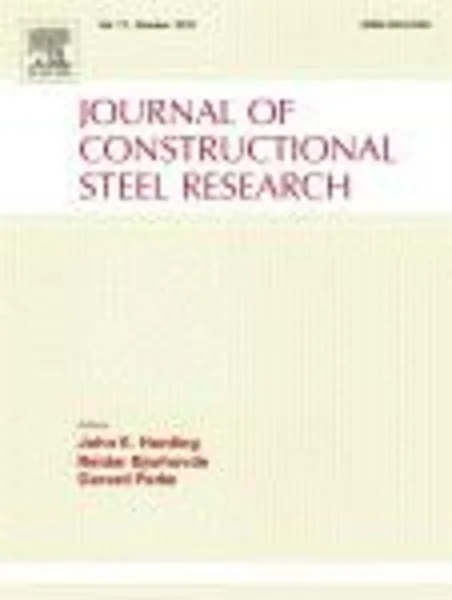-
response modification factor for steel moment-resisting frames by different pushover analysis methods
جزئیات بیشتر مقاله- تاریخ ارائه: 1394/01/01
- تاریخ انتشار در تی پی بین: 1394/01/01
- تعداد بازدید: 626
- تعداد پرسش و پاسخ ها: 0
- شماره تماس دبیرخانه رویداد: -
the earthquake loads imposed to the structures are generally much more than what they are designed for. this reduction of design loads by seismic codes is through the application of response modification factor (r-factor). during moderate to severe earthquakes, structures usually behave inelastically, and therefore inelastic analysis is required for design. inelastic dynamic analysis is time consuming and interpretation of its results demands high level of expertise. pushover analysis, recently commonly used, is however, a simple way of estimating inelastic response of structures. despite its capabilities, conventional pushover analysis (cpa) does not account for higher mode effects and member stiffness changes. adaptive pushover analysis (apa) method however, overcomes these drawbacks. this research deals with derivation and comparison of some seismic demand parameters such as ductility based reduction factor, rμ, overstrength factor, ω, and in particular, response modification factor, r, from capacity curves obtained from different methods of apa and cpa. three steel moment-resisting frames of 3, 9 and 20 stories adopted from sac steel project are analyzed. in pushover analyses for each frame, eight different constant as well as adaptive lateral load patterns are used. among the main conclusions drawn is that the maximum relative difference for response modification factors was about 16% obtained by the methods of conventional and adaptive pushover analyses.
مقالات جدیدترین رویدادها
-
استفاده از تحلیل اهمیت-عملکرد در ارائه الگوی مدیریت خلاقیت سازمانی و ارائه راهکار جهت بهبود
-
بررسی تاثیر ارزش وجوه نقد مازاد بر ساختار سرمایه شرکت های پذیرفته شده در بورس اوراق بهادار تهران
-
بررسی تأثیر سطح افشای ریسک بر قرارداد بدهی شرکت های پذیرفته شده در بورس اوراق بهادار تهران
-
بررسی تأثیر رتبه بندی اعتباری مبتنی بر مدل امتیاز بازار نوظهور بر نقد شوندگی سهام با تأکید بر خصوصی سازی شرکت ها
-
تأثیر آمیخته بازاریابی پوشاک ایرانی بر تصویر ذهنی مشتری پوشاک ایرانی (هاکوپیان)
-
عوامل مشترک تخریب ساختمان ها در زلزله کرمانشاه و بم با محوریت بررسی اجمالی اشکالات اجرایی حین ساخت
-
بررسی نتایج به کارگیری حسابداری تورمی بر شاخص های ارزیابی عملکرد در صنایع کانی های غیر فلزی بورس اوراق بهادار تهران
-
مدلسازی شبکه یکپارچه کالا و حل آن با الگوریتم مورچگان
-
بررسی آزمایشگاهی تاثیر پودر آهن ضایعاتی در کاهش پدیده خزش روسازی های آسفالتی
-
امکان سنجی استفاده مجدد از پساب شستشوی معکوس صافی ها در جهت بهینه کردن استفاده از منابع آب (با مطالعه موردی تصفیه خانه تهران پارس)
مقالات جدیدترین ژورنال ها
-
مدیریت و بررسی افسردگی دانش آموزان دختر مقطع متوسطه دوم در دروان کرونا در شهرستان دزفول
-
مدیریت و بررسی خرد سیاسی در اندیشه ی فردوسی در ادب ایران
-
واکاوی و مدیریت توصیفی قلمدان(جاکلیدی)ضریح در موزه آستان قدس رضوی
-
بررسی تاثیر خلاقیت، دانش و انگیزه کارکنان بر پیشنهادات نوآورانه کارکنان ( مورد مطالعه: هتل های 3 و 4 ستاره استان کرمان)
-
بررسی تاثیر کیفیت سیستم های اطلاعاتی بر تصمیم گیری موفق در شرکتهای تولیدی استان اصفهان (مورد مطالعه: مدیران شرکتهای تولیدی استان اصفهان)
-
بررسی آثار و وضعیت ازدواج کودکان در فقه امامیه و حقوق ایران
-
تاثیر کنترل وزن و تعادل بر ایمنی پرواز بالگرد
-
بررسی تاثیر درآمد خالص ، نسبت جاری و نسبت بدهی به دارایی، بر قیمت سهام بخش صنعت کالاهای مصرفی فهرست شده در بورس اوراق بهادار تهران
-
مطالعه تطبیقی موزه ایران باستان و موزه بابل و نقش آنها در ارتقاء آگاهی کودکان برای حفاظت از آثار تاریخی با رویکرد تربیتی
-
artificial neural network (ffbp-ann) based grey relational analysis for modeling dyestuff solubility in supercritical co2 with ethanol as the co-solvent




سوال خود را در مورد این مقاله مطرح نمایید :